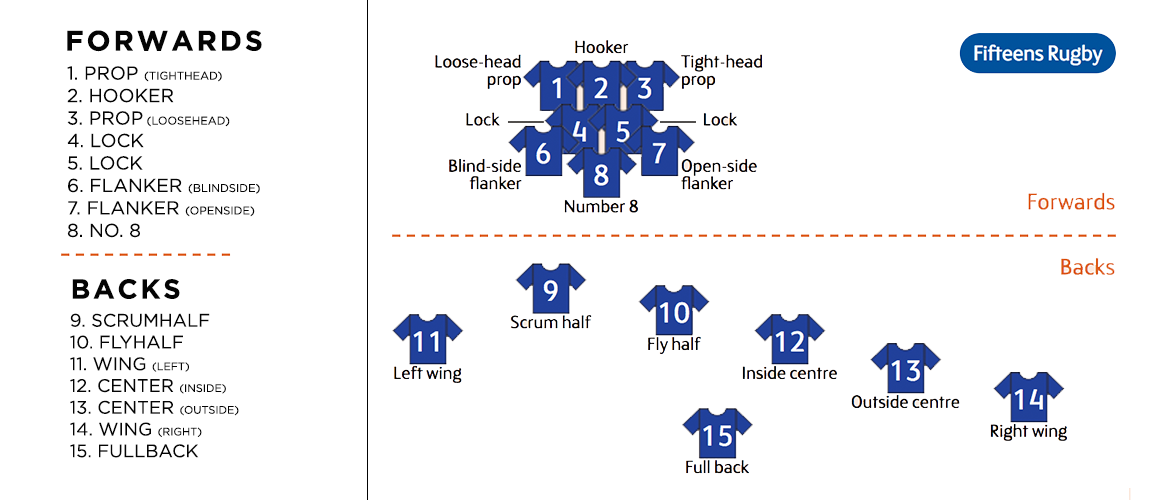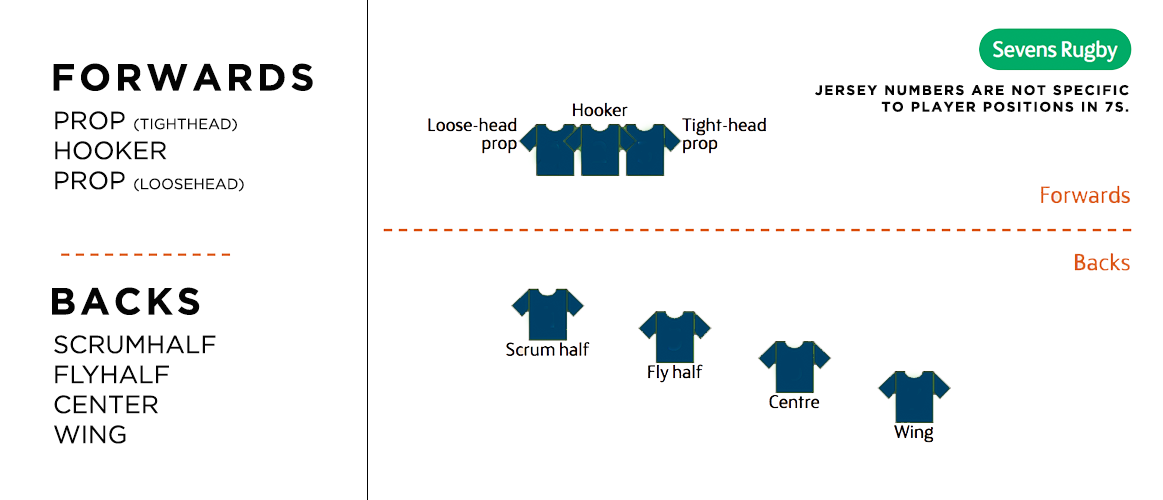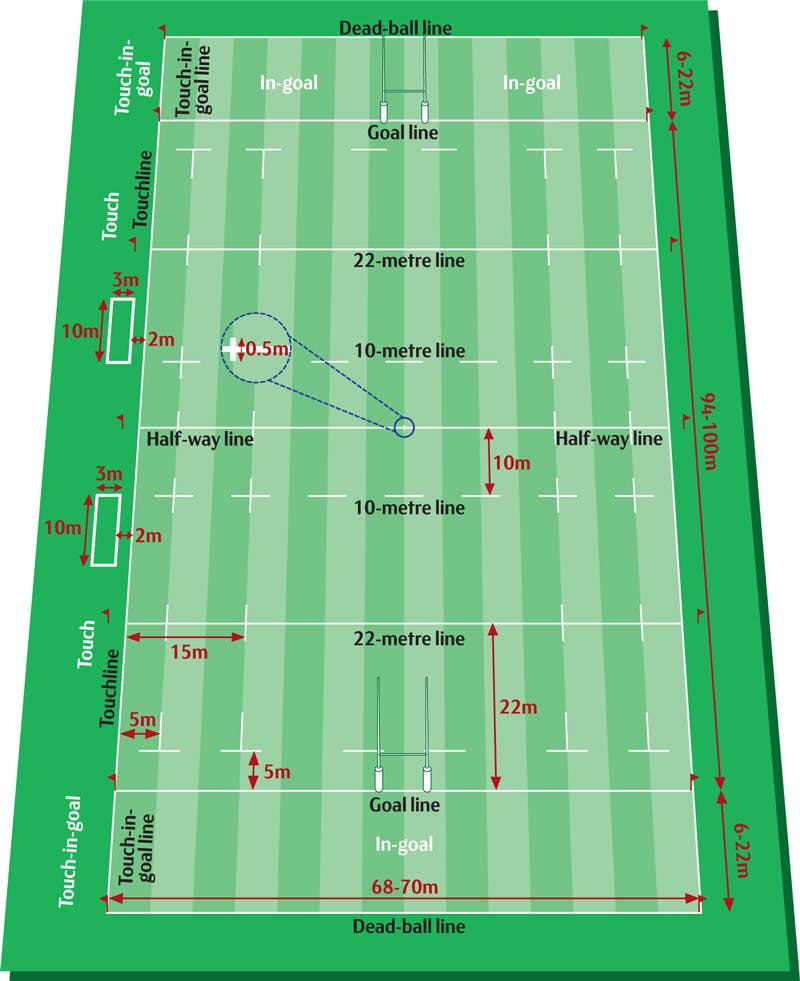The following is an exerpt from the usa rugby website. For the full article Visit usa.rugby/rugby101
HISTORY
In 1823, William Webb Ellis used his hands to pick up a ball in a soccer match and ran with it to the goal. That day, rugby was born. There are two primary forms of rugby union: rugby fifteens and rugby sevens. Touch rugby, beach rugby, rugby tens and rugby twelves are also iterations of the sport often used as a development pathway and feeder into the main forms.
SAFER WITHOUT PADS
Though rugby players don't wear pads or helmets, the techniques and rules of the sport make impact much safer. Rugby players are taught to use their arms and shoulders when making contact with opponents; earning serious repercussions for any contact above the shoulders and other dangerous styles of play. Players caught disregarding these rules receive a yellow card and are forced to sit on the bench for ten minutes in rugby fifteens and two minutes in rugby sevens. Serious offenses can result in a red card, with the chance of suspending the athlete for weeks.
ABOUT RUGBY 15S
Fifteens is played with 15 players on each side of the ball who compete for 80-minutes (two 40 minute halves) in individual matches through the year. Rugby fifteens was an Olympic sport in the early 1900s where the U.S. men won gold medals in 1920 and 1924. The Rugby World Cup is now the main pinnacle event of the sport -- taking place every four years -- and also serves as the third-largest single-sporting event in the world.
Two teams of 15 players have 80 minutes to advance the ball past their opponents' side of the field (pitch) and touch it to the ground for a score worth 5 points (try). Participants may only pass the ball backwards or sideways with no blocking allowed; using a variety of phases such as lineouts, mauls, rucks and scrums to retain possession during play. Rugby is unique in that play is continuous even after players are tackled on the field. Kicking is the only method by which both teams may move the ball forward. After each try, worth 5 points, the scoring team is allowed an opportunity to kick the ball through the posts for an additional 2 points (conversion). Certain penalties also earn the non-offending team a kick through the posts, worth 3 points (penalty) if made. At the conclusion of the match, the team with the most points wins.

ABOUT RUGBY 7S
Rugby sevens is a current Olympic sport, making its first appearance in the Olympic Games Rio 2016. Sevens is played with 7 players on each side of the ball who compete for 14-minutes (two 7-minute halves) in tournaments with up to three matches per competition day. The first day typically consists of pool rounds after which a team's performance qualifies them for the Championship track or Challenge track. The Championship track typically awards the top finishes of the tournament including first, second and third place. The Challenge track consists of consolation rounds. Teams for either track must continue to play through the tournament to earn their final placing.
RULES OF RUGBY 7S
A fast, high-scoring version of traditional rugby, sevens is played with two teams of 7 players who have 14 minutes to advance the ball into their opponent's area of the field (pitch) and touch it to the ground for a score worth 5 points (try). As in the 15-a-side version of the sport, participants may only pass the ball backwards or sideways with no blocking allowed; using phases such as lineouts, mauls, rucks and scrums to retain possession during play. Kicking is the only method by which both teams may move the ball forward. Like rugby fifteens, play is also continues in rugby sevens. After each try, worth 5 points, the scoring team is given an opportunity to kick the ball through the posts for an additional 2 points (conversion). Certain penalties also earn the non-offending team a kick through the posts, worth 3 points (penalty goal) if made. However, penalty goals are rarely seen in sevens. At the end of regulation, the team with the most points wins. If both teams are tied in a knockout round, a 5-minute overtime period will be played, where the first team to score wins.

COMMONLY USED TERMS
- Try |Tthe main objective of the game, to touch the ball down in the opponent's in-goal area (tryzone) for a score worth five points. Unlike American football, the ball must be touched to the ground for the points to be awarded. Tries are the origin of touchdowns in American football.
- Tryzone | The in-goal area where tries are scored.
- Conversion | A kick worth an additional two points offered to the scoring team immediately after a try. Conversions must be kicked in line with where a try was scored. In rugby sevens, players may not place the ball on a tee and must kick the conversion using a drop-kick (tossing the ball above the feet and kicking it before it hits the ground).
- Penalty | A kick worth three points awarded to a non-offending team when their opposition commits a penalty.
- Touchline (similar to sideline) | When the ball moves out of bounds or outside the field of play.
- Tryline | The goal line the separates the area where a try may be scored and the remaining field of play
- Tackle | A tackle occurs when the ball carrier is brought to the ground and held by one or more opponents. A ball carrier must release the ball immediately following the tackle. Unlike American football, play does not stop when tackles are made.
- Ruck | A ruck is when the ball is on the ground and at least one player from each team closes around it while on their feet. The ball cannot be handled in the ruck, players must move it until it reaches a teammate's hindmost foot and can be picked up.
- Maul | When the ball carrier is held by one or more opponents and one or more of his or her teammates bind on as well. The ball must be off the ground, a minimum of three players must be involved.
- Lineout | A means of restarting play after the ball falls out of the field of play (touchline). Forwards assemble in a line on each side where one team's hooker throws the ball straight in the middle. Each team uses various formations to lift players up, retrieve the ball and put it back in play. Which team's hooker throws the ball into the lineout is circumstantial.
- Scrum | A means of restarting play after an infringement. Each team's forwards bind together and connect with an opposing team's forwards. The ball is thrown into the middle of the tunnel by the non-offending team's scrumhalf. Both team's hookers use their feet to try and move the ball while also pushing the other team backwards until the ball reaches the hindmost leg of one of their teammates where they can claim possession.
- Sin Bin | when a player is removed from the game and forced to sit out for 10 minutes (rugby fifteens) or two minutes (rugby sevens) for dangerous play or serious infringements.
PITCH


